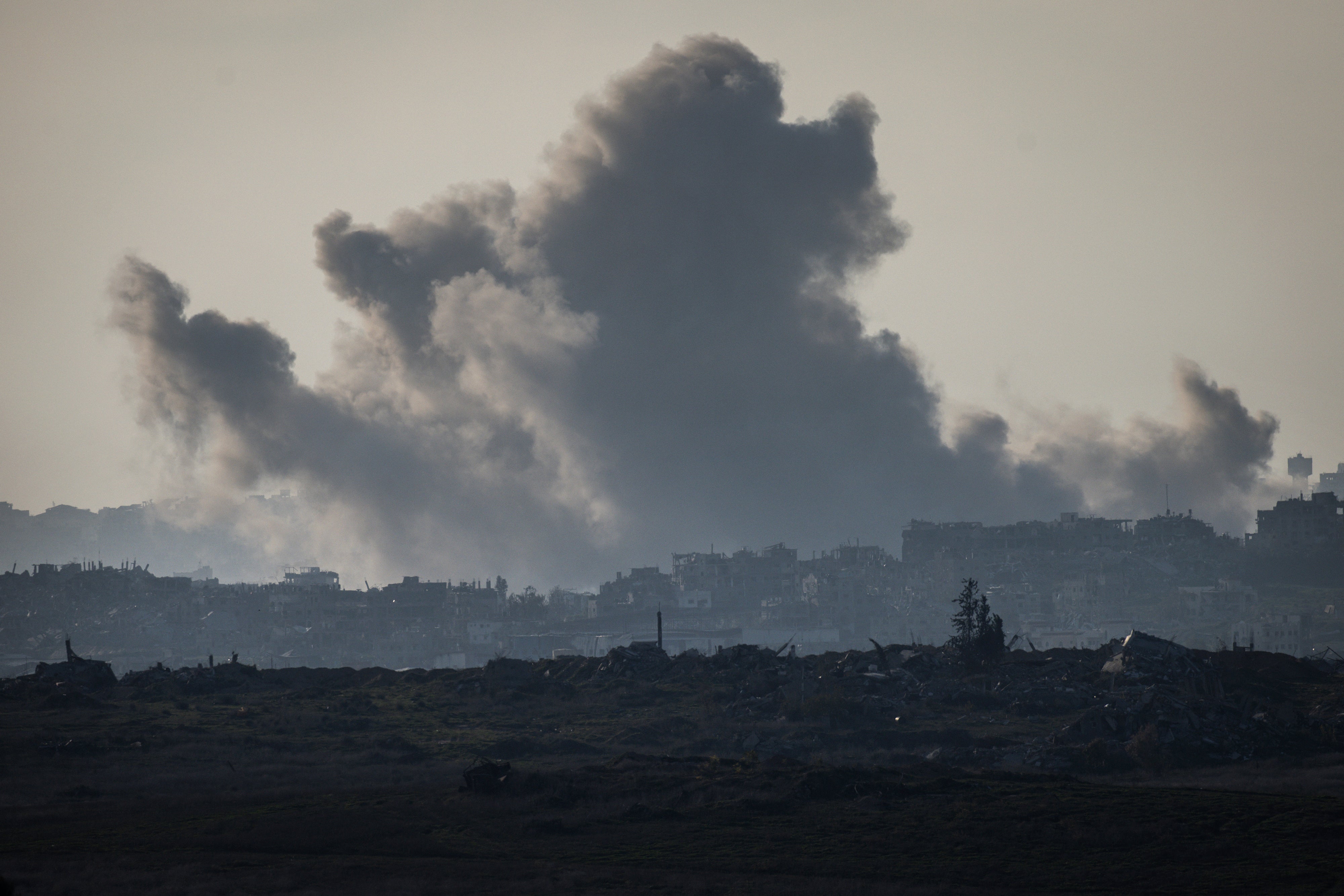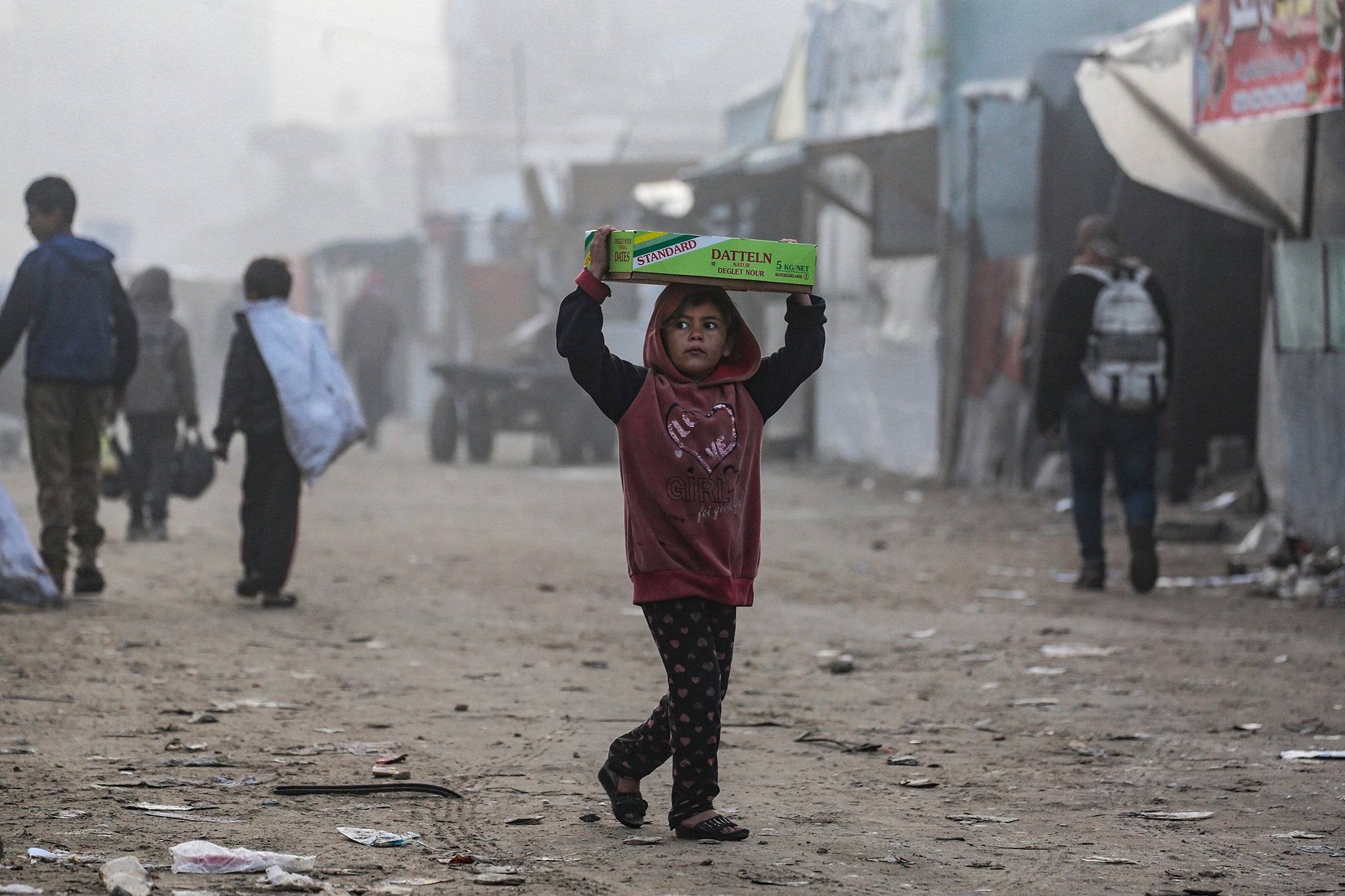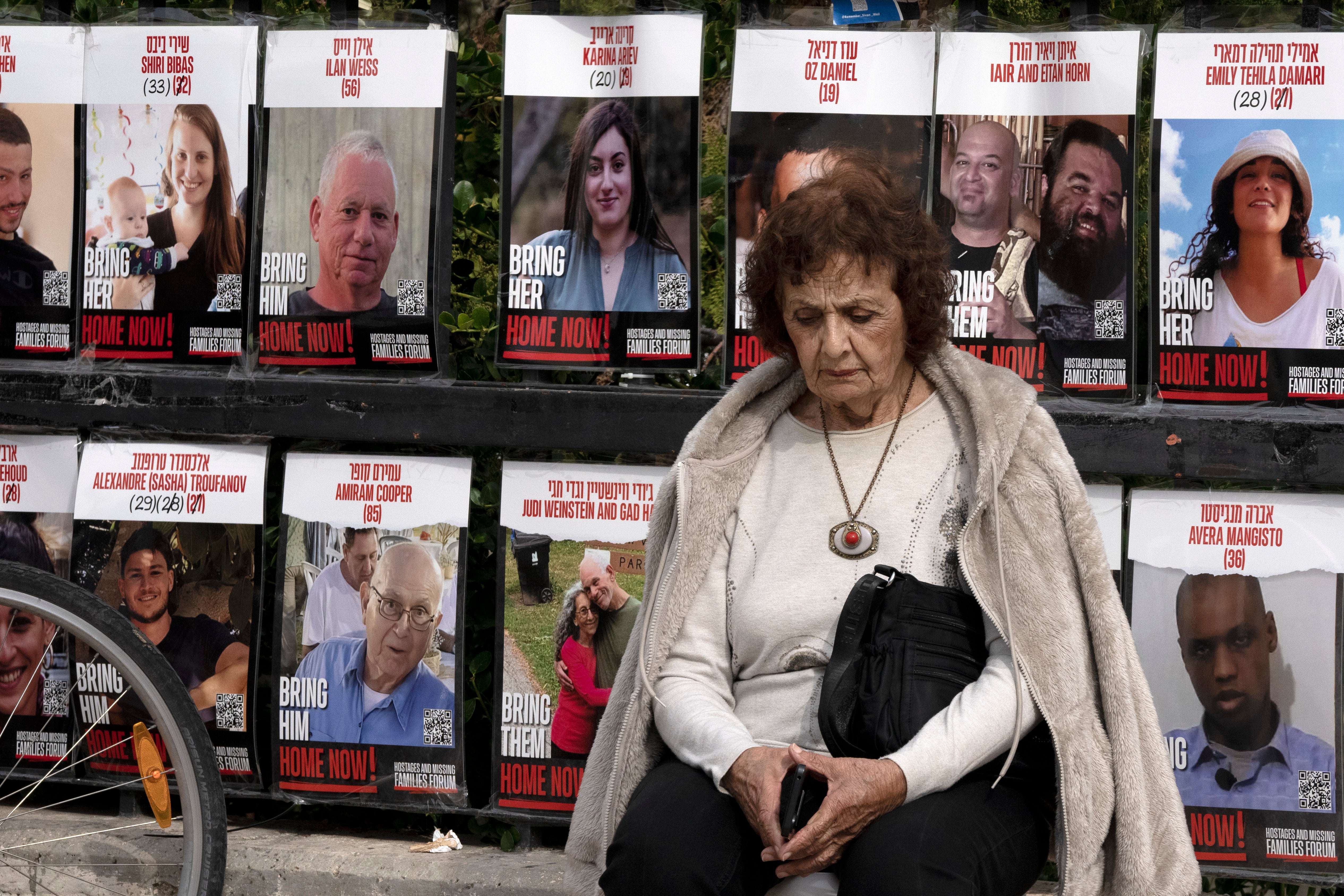Relatives of hostages set to be freed in Sunday’s ceasefire say they do not know whether to prepare for “a festival or a funeral” as tensions between both sides soared just hours before the deal was slated to begin.
Israeli prime minister Benjamin Netanyahu issued a fresh warning on Saturday evening, saying his government was “unable to move forward with the framework” of the deal, sparking further concerns about the fragile agreement. He said Israel had yet to receive the list of the hostages who will be released, as was agreed.
“Israel will not tolerate violations of the agreement. Hamas is solely responsible,” he said, before threatening a continuation of hostilities. “We are holding onto some significant assets to ensure the return all of the hostages fighting. We withhold the right to resume fighting if the second stage seems pointless.
“If we resume combat we will do it in new ways and in tremendous force. Hamas tried to dictate to us but I adamantly objected. We retain the right to resume the war if we are not satisfied with the backing of the US.”

Israeli warplanes and tanks, meanwhile, pounded the Gaza Strip in the hours leading up to the truce, hitting 50 “targets” since Friday, the Israeli military said. Israeli tanks shelled Gaza City, and airstrikes hit central and southern Gaza, including displaced people in tents in the so-called humanitarian zone of the Mawasi area. In total, since the ceasefire deal was announced on Wednesday, Palestinian media said strikes have killed at least 123 Palestinians.
Families of those expected to be among the first batch to be released said they were worried that the deal is so complicated and fragile that it could easily collapse before the remaining 65 hostages are due to be freed.
They are also concerned that no one knows how many of the 33 hostages set to be released in the first six weeks are still alive. Israeli media reported that eight of them may have passed away during the last 15 months of captivity under fire.
Ofri Bibas Levy, aunt of of the youngest hostage Kfir Bibas, spoke at a rally about her concerns that he had not made. Kfir was just 8 months old when he was abuducted with his five-year-old brother and mother, and turned two years old on Saturday,.
“Today, I tried to write a birthday message for Kfir for the second time. A message for a child who cannot celebrate,” she said in tears addressing a rally in Tel Aviv. “ A child who isn’t here. A child trapped in hell. A child who might not even be alive. But no words come out, only tears. How could they rob Kfir of his right to enjoy his birthday? I’m sorry, Kfir. You should have been home by now. “
Daniel Lifshitz, whose 84-year-old grandfather Oded is among the oldest hostages due to be released, told The Independent that the last known proof of life the family had was from November 2023.

Oded, a retired journalist and peace activist who has British family, was seized along with his wife Yocheved from Nir Oz on 7 October. He has a lung disease and high blood pressure and was last seen by another hostage over a year ago.
“I don’t know what to prepare for: a festival or a funeral,” he told The Independent on Saturday evening. “Both are really possible. So how can I prepare for one of them and face the other? Time will tell.
“We just hope that the miracle will come. That he will return on two legs and we will accept him with blessings and love.
“Maybe it’s time humanity is coming back. Humanitarian aid is going into Gaza. Our hostages are coming back.”
In Gaza, families said they were cautiously optimistic about the ceasefire but were increasingly worried as the strip was pounded by airstrikes.

“We are trying not to get too excited in case things don’t go as planned,” said Ansam, 20, who has been displaced five times and lost over a dozen members of her extended family. “At night the airstrikes are heavy,” she added.
The Gaza ceasefire, brokered by Qatar and the US, is due to come into effect at 6.30am GMT on Sunday, according to the foreign minister of Qatar, with the actual exchange set to take place at 4pm local time.
Many hope it will herald the end of a devastating 15-month conflict that has claimed the lives of 46,000 Palestinians – more than half of them women and children – as well as over 1,000 Israelis.
The White House expects three female hostages to be released to Israel in the afternoon through the Red Cross. The remaining 30, including women, children, men over 50, and sick or wounded people, will be released in groups of three or four over the following five weeks.
Hundreds of Palestinian detainees are to be released as well, and the largely devastated Gaza should see a surge in humanitarian aid. Israel’s Justice Ministry published a list of 734 Palestinian prisoners to be freed in the deal’s first phase, among them dozens of women and minors, with the youngest detainee being just 16 years old.

A senior official in the Israeli military said preparations to receive the hostages were complete, with three reception points along the border region between Gaza and Israel: at Zikim for the northern part of the strip, Kerem Shalom for the south, and another in the centre set up for when hostages are delivered there by the Red Cross.
The hostages will be met by Israeli military members, medics, and mental health specialists for an initial assessment before being taken by road or helicopter to six hospitals across the country.
The official said the Israeli military was also adjusting deployment in Gaza along with a gradual withdrawal from specific locations and routes within Gaza. He said the 162nd Division will take responsibility for the northern part of Gaza. The 143rd Division will take responsibility for the southern Gaza Strip.
The 99th Division is in the Netzarim corridor – an area under Israeli control since November 2023, which splits Gaza in half – and will “be gradually moving as this agreement goes on”.

Israeli forces are supposed to start withdrawing from the Netzarim corridor on the seventh day. By the end of the first 42 days, they are also supposed to withdraw from the Philadelphi corridor, which is an area along the border between Gaza and Egypt. The official said Palestinian civilians in Gaza “should not approach areas where IDF soldiers are stationed”, which will change as the gradual withdrawal continues.
Israel has continued to pound Gaza, killing at least 23 people in the past 24 hours alone. A tent housing a family who were displaced from other parts of Gaza was among the areas hit.
“What is this truce that kills us hours before it begins?” asked Abdallah Al-Aqad, the brother of a woman killed by an airstrike in the southern city of Khan Younis. Health officials said a couple and their two children, aged two and seven, were killed.
In the afternoon sirens sounded across central and southern Israel, including Tel Aviv, with the military saying it intercepted projectiles launched from Yemen. Iran-backed Houthi rebels there have stepped up attacks in recent weeks, calling it solidarity with Palestinians in Gaza.
Later on Saturday, Israeli police said one person had been seriously wounded in a stabbing in central Tel Aviv that they labelled a “terrorist attack”. The incident has raised fears among civilians in both Gaza and Israel.
In Gaza, Ansam said her family were hopeful the ceasefire would hold, adding that one of the immediate benefits of the announcement of the agreement was that food prices, which are prohibitively expensive, had started to come down. Gaza has been in the grip of famine.
“For the first time, we can buy flour; we can eat three meals a day,” she said. “For the last two months, it had got so bad we were only able to eat once a day.”
In Israel, famlilDaniel, who was waiting anxiously for news of his grandfather, told The Independent his family was worried the ceasefire wouldn’t even “hold until the end of the first phase”, let alone continue for phases two and three, because it was so complicated.
He called on the world to work “day and night” to try to see it through, adding: “I believe it will move forward, and I believe everyone will come back.”




